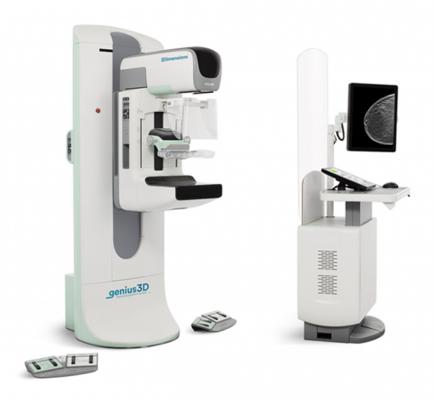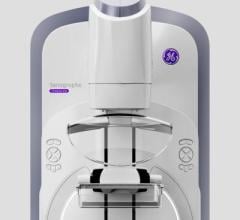
March 28, 2018 — Hologic Inc. announced that Clarity HD high-resolution 3-D imaging and Intelligent 2-D imaging technology have received premarket approval (PMA) from the U.S. Food and Drug Administration (FDA) and are now available on the 3Dimensions breast tomosynthesis system. With these innovations, the system now provides higher resolution 3-D breast images for radiologists, enhanced workflow for technologists, and a more comfortable mammography experience with low-dose options for patients.
Hologic originally released the Genius 3-D Mammography exam, first approved by the FDA in 2011 on the company's 3-D Mammography system. Today, Hologic has installed more than 5,000 3-D Mammography systems throughout the United States and is continuing to help ensure insurance coverage is available for all women. More than 90 percent of women ages 40 to 75 currently have coverage for the Genius exam, and more than 16 million women in the U.S. get a Genius exam each year. The Genius exam detects 20-65 percent more invasive breast cancers and is the only mammogram approved by the FDA as superior for women with dense breasts compared to 2-D alone.1,2
The new Clarity HD high-resolution 3-D imaging technology provides what Hologic calls the industry's fastest, highest resolution 3-D images to accelerate screening and analysis, and is designed to clearly reveal subtle lesions and fine calcifications to help pinpoint cancers early. Clarity HD technology's advanced detector and innovative 3-D imaging algorithm work together to deliver high-quality 3-D images, regardless of breast size or density.
Intelligent 2-D imaging technology works with Clarity HD technology to deliver superior overall image quality, and clarity, contrast and detail at a lower dose.3,4
Another new feature, the SmartCurve breast stabilization system, is clinically proven to deliver a more comfortable mammogram without compromising image quality, workflow or dose.5 The SmartCurve system has been proven to improve comfort in 93 percent of women who reported moderate to severe discomfort with standard compression.5 It features a curved compression surface that mirrors the shape of a woman's breast to reduce pinching and allow uniform compression over the entire breast.
In addition, Quantra 2.2 Breast Density Assessment Software, also available on the 3Dimensions system, enables clinicians to provide women with consistent breast density assessments during routine breast cancer screenings. Breast density is only identifiable on a mammogram or other screening modality, and has historically been determined by the radiologist who reads the image. Through a proprietary algorithm powered by machine learning, Quantra software analyzes mammography images for distribution and texture of breast tissue, delivering clinicians accurate breast density assessment. Quantra software categorizes breasts into four density categories, in alignment with the American College of Radiology Breast Imaging-Reporting and Data System (ACR BI-RADS) Atlas 5th Edition.6,7
The Genius 3-D Mammography exam (also known as the Genius exam) is only available on a Hologic 3-D Mammography system. The Genius exam consists of a 2-D and 3-D image set, where the 2-D image can be either an acquired 2-D image or a 2-D image generated from the 3-D image set.
For more information: www.hologic.com
References
- Results from Friedewald, SM, et al. "Breast cancer screening using tomosynthesis in combination with digital mammography." JAMA 311.24 (2014): 2499-2507; a multi-site (13), non-randomized, historical control study of 454,000 screening mammograms investigating the initial impact the introduction of the Hologic Selenia® Dimensions® on screening outcomes. Individual results may vary. The study found an average 41% increase and that 1.2 (95% CI: 0.8-1.6) additional invasive breast cancers per 1,000 screening exams were found in women receiving combined 2D FFDM and 3D™ mammograms acquired with the Hologic 3D Mammography™ System versus women receiving 2D FFDM mammograms only.
- FDA submissions P080003, P080003/S001, P080003/S004, P080003/S005.
- Compared to C-view
- Compared to 2D alone
- Smith, A. Improving Patient Comfort in Mammography. Hologic WP-00019 Rev 003 (2017).
- FDA 510(k) K163623
- Understanding Quantra™ (Version 2.2) User Manual


 July 09, 2025
July 09, 2025 








